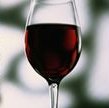California vintners perfecting pinot noir
 Such is the mystique of Burgundy that its devotees are wont to believe it is the one and only place in the world to produce great pinot noir.
Such is the mystique of Burgundy that its devotees are wont to believe it is the one and only place in the world to produce great pinot noir. At one time, there was Burgundy on its pedestal, inspiring passionate prose and blind loyalty. Everything else was subject to scorn. There are but a handful of places in the world where conditions are ideal for pinot noir, a difficult wine grape to work with even when nature cooperates. Even the vast majority of red Burgundies fail to measure up in most vintages. But no pinot-noir producing part of the world was the target of more ridicule than California.
The quality of California pinot has evolved in recent years as vintners have come to better understand the best places to plant pinot vineyards. The Russian River Valley, the Santa Maria Valley and Carneros - all cool-climate wine-growing regions in coastal California - have the best track record over the past 10 vintages. But the one cool coastal appellation that seemed to have the appropriate conditions yet continued to be a pinot-noir wasteland was the Edna Valley, just outside the small college town of San Luis Obispo in California`s central coast. Until now.
Three small producers - Baileyana, Domaine Alfred and Stephen Ross - have taken up the cause and invested both money and energy in the pinot-noir quality effort.
"The 1997 and 1998 vintages were good because of improved facilities and better winemaking," said Baileyana winemaker Christian Roguenant, a Burgundian by birth. "Beginning with the 1999 vintage, you will see pinot noir from the Edna Valley take off quickly."
Most of the older pinot noir from this area was made from one clone. Now there are new vineyards with as many as seven different clones. Everyone in the Edna Valley should make wonderful pinot noir from the 1999 vintage, unless something went terribly wrong in the winery.
"This valley is even cooler than Santa Maria Valley. We are closer to the ocean, have the coastal fog, and that produces good acid and elegant wines. We get a lot of the red fruits in our pinot. Red currant, red cherry, strawberry and only a little of that black cherry that doesn`t even taste like pinot noir."
Baileyana has a 130-acre pinot-noir vineyard that yielded its first useful crop (it typically takes a minimum of three years from the time vines are planted) in 1999. Domaine Alfred, formerly Chamisal, made its debut with the new clones in 1998. The Domaine Alfred retails for about $30, and the newly released 1998 Stephen Ross from the Edna Valley goes for $22.
"My goal here is to make a 20- or 25-dollar pinot noir that would be just as nice as a 60-dollar Burgundy," said Roguenant.
The Baileyana sells for $22. Based on the promising efforts from the Edna Valley over the past few vintages, that`s no idle boast.WINE FINDS
Recommended wines are grouped into three categories to help consumers better determine what to expect from each wine. The highest rating is three stars for wines that exhibit the most outstanding qualities of flavor, balance and personality. Wines rated two stars are exceptional. One star indicates a wine is excellent for the price. All prices are nationally suggested retail.
Campanile 1999 Pinot Grigio ($11) is meant to complement food, not overwhelm it. And no one has to think very hard to enjoy it. This wine was produced in Italy`s Friuli region, one of the finest locations for white wines in all of Italy. Crisp and clean, with fruit complexities that are more a whisper than a roar, the Campanile Pinot Grigio is fresh and pleasing on the palate and finishes nicely. None of that tart fruit that bites on the back end. Serve with grilled seafood, light pasta dishes or Mediterranean tapas. Rating: 1 star.
The Preston 1998 Estate Zinfandel ($16) is the sort of briary, jammy wine that makes zin lovers weep. But no one has to be a zinfandel aficionado to enjoy this excellent bottling from one of Sonoma`s Dry Creek Valleys. Proprietor Lou Preston is as passionate about good wine as any vintner on the planet, and he keeps a lid on the prices, so think of this as a $30 wine in a $16 bottle. The flavors are wild blackberry and dark currant, complemented by an array of spice notes. Hints of chocolate and licorice add yet another dimension of complexity. Rating: 2 stars.
Clos du Bois 1998 Chardonnay "Calcaire" ($20) is typical of chardonnay from the Alexander Valley in northern Sonoma County, which is best known for its red wines, particularly cabernet sauvignon. Typical chardonnay from Alexander Valley is rich, ripe and mouth-filling. This particular vintage of Calcaire was awarded a gold medal at the recent San Diego National Wine Competition, and it`s easy to understand what the judges were thinking. Beautiful tropical fruit, generous amounts of oak and a creamy texture make for an enticing combination that will please most chardonnay fans. Rating: 2 stars.
Bouchaine 1998 Chardonnay ($20) is from the same vintage as the Clos du Bois "Calcaire" but is quite different, though no less good. Here the cool growing region of Carneros (in southern Napa Valley) drives the style of wine. The Bouchaine Chardonnay packs loads of bright tropical fruit and citrus aromas, with beautifully balanced acidity. The presence of oak is subdued, allowing the more delicate aromatics to shine through. An excellent food wine, this also is the kind of chardonnay that is suitable for sipping because it doesn`t overwhelm with the smell of oak. Rating: 2 stars.
Geyser Peak "Block Collection" Cabernet Sauvignon "Vallerga Vineyard" ($35) is a new concept for Geyser Peak, in keeping with the trend throughout California to produce more vineyard-designated wines. There are three different wines in the initial "Block Collection" release - two cabernets and a chardonnay - and all are superb, but the Vallerga is the most impressive. The Vallerga vineyard is located just outside the village of Yountville in the foothills of the Mayacamas mountains in the Napa Valley. It`s a blockbuster cab, with massive richness and depth and plenty of ripe tannins. As with all of the wines from Geyser Peak, it can be enjoyed now. But this one would definitely benefit from a few years in the cellar. Rating: 3 stars.
Comte Lafond 1998 Sancerre ($25) is the sort of classic Sancerre that convinces devotees of the sauvignon-blanc grape that it can rival chardonnay in popularity someday. That may never happen, of course, but a good Sancerre at the dining table is sometimes hard to beat. This vintage of Comte Lafond demonstrates the beauty of Sancerre, the smoky, flinty aromas that are the perfect match for oysters and most other shellfish, beautifully balanced acidity and wonderful citrus and mineral complexities. This is a deceptively complex wine, very elegant and worth every penny at $25 a bottle. Rating: 2 stars.
This week`s exceptional values are the Brancott 1999 Gisborne Chardonnay ($11) and the Regnard 1997 Chardonnay ($14). The Brancott is a crisp find from New Zealand, where winemakers have a restrained hand on the oak and allow the fruit to express itself. In this case, it is a superbly balanced tropical fruit chardonnay that is excellent with summer dishes. Rating: 1 star.
The white Borgogne from Regnard has a bit more oak, but the wood taste is merely an interesting complexity. Aromas of pear, apple and butterscotch define this lovely, reasonably priced wine. Rating: 1 star.
Visit Robert Whitley online at www.whitleyonwine.com or send e-mail to him at whitonwine@aol.com.
(c) Copley News Service
advertisement

Related Articles
Author: Robert Whitley
Archives
Vintage port is built to last
California`s Chalone making a comeback
Dining well in California wine country
Ports are more durable than most wines
Grappling with grapes
The many glories of grappa
A wealth of great wine
The seismic shifts at Chandon
The readers always write
Here`s all the news that`s fit to vint
A wine with wheels
Robert Mondavi`s California dream
A level playing field at the Monterey Wine Competition
Fine wines can still be kosher
You`ll appreciate your older wine more than it appreciated
More Articles







